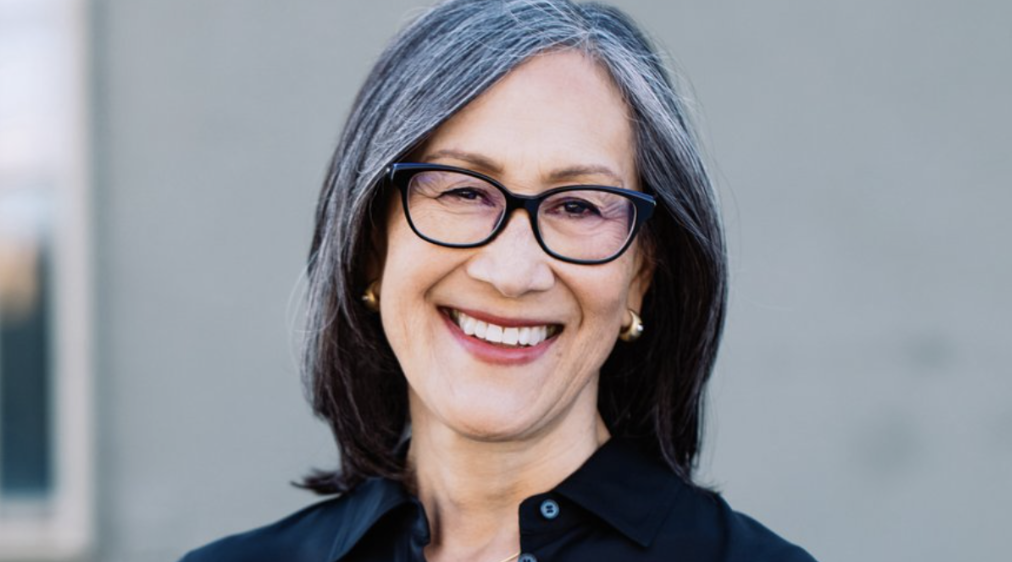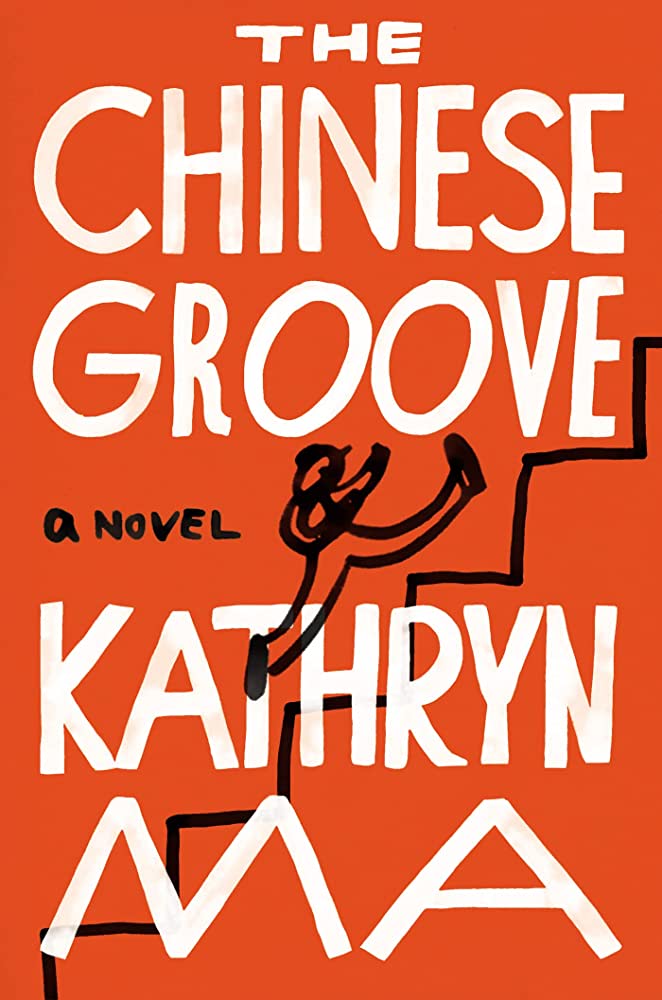Kathryn Ma’s novel The Chinese Groove is an immigrant story unlike most. Shelley, the 18-year-old narrator, is buoyed by unwavering optimism, apparently immune to despair. Raised by his widowed father in Yunnan Province, he heads to San Francisco to claim his destiny—but soon finds the transition to life in the U.S. more complicated than he could have ever imagined.
I spoke with Ma about Victorian novels, unreliable narrators, and breaking the fourth wall.
Nina Schuyler: In your first novel, The Year She Left Us, you had four characters and intertwined stories. What did you want to do differently from a craft perspective in The Chinese Groove?
Kathryn Ma: Indeed, I wanted to do something technically difficult for me. I try to do that with every piece of writing now that I’m further along in my writing. This time, I wanted to try to write an entire book from a first-person point of view. It turned out to be quite difficult—and fun—because I didn’t want to have the narrator in every scene. I borrowed from the Victorian novel with a narrator who eavesdrops and hears a story from another character. I included a newspaper article, and I had my narrator imagine conversations. But most important was to inhabit my main character’s voice.
NS: Did Shelley’s voice come quickly to you?
KM: I began writing from his point of view from the start. Shelley is 18 years old when he comes from Southwest China to America. His voice came easily, but I worked on the language, fine-tuning vocabulary and diction. In China, he studied English, and in recent months, he studied more intensely with a British teacher, so he has some command over English. He loves language, he loves to play with words and make up words. The phrase “the Chinese groove” is his creation.
NS: Some writers who want to capture the voice of a non-native English speaker drop the indefinite and definite articles. But you decided not to do that. Can you talk about that?
KM: Shelley had a strict teacher, Miss Chips, and she taught her students to be very precise. I made the decision that Shelley would speak closer to someone who is more capable in the English language than a beginner. In his mind, he’s not translating English words into Chinese in order to speak English. That was important for me because my novel is about communication and storytelling. I wanted him to be beyond language as a stumbling block. The problem of communication in the novel is not language, but that the characters are incapable of communicating their emotional states to one another.
NS: At times you invoke a retrospective narrator. Can you talk about this decision?
KM: That decision came later in writing the book. I wanted to stay present in Shelley’s youth because his youthful optimism is a driving force. But I did want to give him some emotional distance. He’s young when the events of the story take place. The retrospective view gave him time to consider that year, what he called his “fateful frolic.”

NS: Shelley faces so many obstacles in the United States, but he never falls into the dark underbelly of despair or grief or depression. What was involved in the decision to steadfastly stay with this character trait throughout?
KM: Shelley and his father are recovering from the death of Shelley’s mother. His father is the one curled up in a room and unable to function. Shelley, from seven years old, has had to help his father function in the world, and his defense mechanism is to be extremely optimistic and buoyant; it’s a matter of survival for him.
Also I think he was born that way. I’ve met a few people like this, not many, who are truly cheerful. I wanted to give myself a challenge: how do I write a cheerful character who doesn’t come off as grating? The responses I’ve gotten suggest I met my hope for him, which is that he’s naturally optimistic but not a fool. One of the works of literature I had in mind when I was thinking of Shelley was Voltaire’s Candide, though I didn’t want to satirize Shelley.
I love the cover art of The Chinese Groove so much, because we see this airborne young man dashing up a set of stairs. That’s how I picture Shelley.
NS: He’s not a fool in part because he’s very pragmatic.
 KM: I didn’t consciously use this as a model, but what comes to mind is the play, The Servant of Two Masters, by Carlo Goldoni. Shelley is a figure buffeted by people who have control over his life, but he manages it all.
KM: I didn’t consciously use this as a model, but what comes to mind is the play, The Servant of Two Masters, by Carlo Goldoni. Shelley is a figure buffeted by people who have control over his life, but he manages it all.
NS: You said the term “The Chinese groove” is made up by Shelley. But it’s not stable, is it?
KM: He comes up with that phrase and attaches it to his hope that he’ll have a safety net when he comes to America. He believes he’ll encounter other Chinese people—he calls them his countrymen—and they won’t let him fail. He literally thinks of it as a groove, not as a dance move, but as a track that runs between one person and another. It turns out to be a hazard because it can’t take the place of human-to-human communication.
It makes him somewhat of an unreliable narrator, but I didn’t want to dwell on this because I think unreliable narrators can leave the reader feeling unbalanced and emotionally confused.
NS: There are a lot of twists and turns in the plot. Did you plan these?
KM: The way I write is building scene by scene. I don’t outline too far in advance, though I might at the end of a day’s work, sketch out a sentence or two where I might go the next day. I try to keep the flow going, but I don’t write every single day because after a few big days—and for me that’s a page and a half and five to six hours of work—I’m mentally spent.
I did want a plot and subplots that held the reader’s attention. As I wrote, I had an image in my head of planes zooming all around, and I’d ask myself, which planes haven’t I looked at in a while? I felt like an air traffic controller: where are the planes, how are their contrails intersect—I couldn’t have them collide, and I wanted them all to land safely at the very last moment.
NS: The dominant immigrant story seems to be that the American dream is tarnished. There’s the brutality of capitalism and few safety nets. But your novel goes in a different direction, driven by Shelly’s optimism. Were you conscious of trying to write a different immigrant story?
KM: It’s certainly a harsh reality for many people who come to the United States that they’ll have very difficult lives. But I didn’t set out to subvert the classic immigration tale. The more conscious theme, one I return to often, is how one creates an independent life and still remains connected to family, and still honors the people who came before you, and fulfills your responsibility to the rest of the family. This is the great dilemma of living a life.
I had an event in New York and was in conversation with my daughter, who is a wonderful writer and reader. She asked me if I wrote this novel because of my father who left China and his family at a young age and came to the United States. It never occurred to me, but maybe this book grew out of my love and yearning for my dad. That part, though, I’ll never quite know.
NS: Occasionally you break the fourth wall, and Shelley addresses the reader directly. It feels like a nod to the nineteenth-century novel. Can you talk about this technique?
KM: Those are little signifiers to remind the reader that Shelley is telling a story. There are many different forms of storytelling in this novel. Shelley’s mother told him myths and folktales; his father made up stories at the end of the day to entertain his mother. Storytelling was important to Shelley and his family; it was the way they communicated with each other. I think in families it’s often difficult to communicate directly with one another, so, instead, we tell stories. In my family, the older generation has imparted its values, history, and wisdom through telling anecdotes or family stories and I gave Shelley this tradition.










